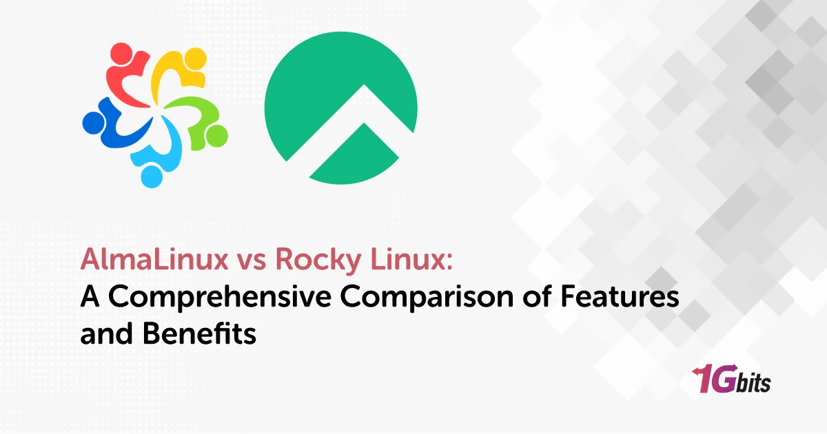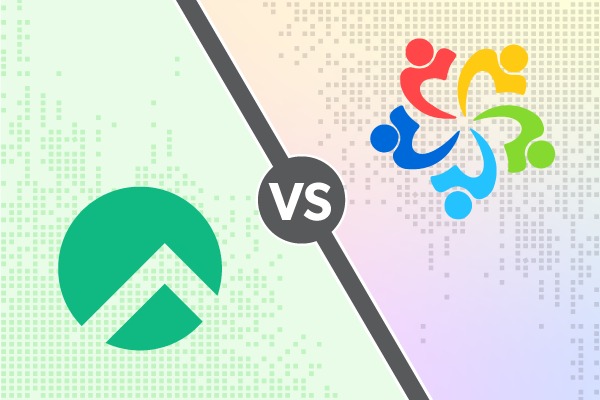When choosing between Alma Linux and Rocky Linux, it’s essential to understand the differences and similarities between these two community-driven, open-source operating systems. Both Alma Linux and Rocky Linux emerged as replacements for CentOS after its shift to CentOS Stream. In this article, we will explore the key aspects of Alma Linux vs Rocky Linux, helping you make an informed decision based on your specific needs.
In the context of Alma Linux vs Rocky Linux 2024, both distributions continue to evolve, providing stability and performance that enterprise environments demand. We'll also delve into comparisons like Alma Linux 8 vs Rocky Linux 8, focusing on their technical capabilities, community support, and enterprise-readiness.
Whether you’re looking for insights on Alma Linux vs Rocky or examining how these systems perform in various use cases like Linux alma linux vs rocky linux, this article will cover it all. Additionally, we’ll discuss specific scenarios such as Alma Linux vs Rocky Linux cPanel and how they stack up against other contenders in the open-source ecosystem, like Oracle Linux vs Rocky Linux vs Alma Linux. By the end, you’ll have a clear understanding of Rocky vs AlmaLinux and which one is the better fit for your environment.
For those new to Linux, understanding the fundamentals is crucial, so be sure to check out our guide on how to use Linux to help you get started.
Rocky Linux vs. AlmaLinux — A Quick Background
In the wake of Red Hat's decision to shift CentOS to a rolling-release model, the community needed a stable alternative, leading to the emergence of AlmaLinux and Rocky Linux. Both are designed to be 1:1 compatible forks of Red Hat Enterprise Linux (RHEL), offering a free and reliable option for users who relied on CentOS. For definition of AlmaLinux, read What is AlmaLinux.
AlmaLinux, sponsored by CloudLinux, was the first to fill this gap, gaining significant traction due to its rapid release and solid backing. Rocky Linux, founded by CentOS co-founder Gregory Kurtzer, followed closely, with a mission to maintain the original vision of CentOS—a community-driven, stable platform.
The Alma Linux vs Rocky Linux debate centers on their shared goals but differing origins. Alma Linux vs Rocky Linux vs CentOS comparisons highlight how both new distributions aim to continue CentOS's legacy, though with different organizational backing. When considering Alma Linux vs Rocky Linux vs Ubuntu, it becomes clear that these two are more specialized for enterprise environments, while Ubuntu serves a broader audience. The Alma Linux vs Rocky Linux popularity contest shows a fairly even split, with users choosing based on community support and personal preferences.
For those evaluating Alma Linux vs Rocky Linux vs Oracle Linux, the choice often hinges on specific enterprise needs, with Oracle Linux offering unique tools like Ksplice. Overall, the Alma Linux vs Rocky Linux landscape is shaped by a shared mission to provide a reliable, community-driven alternative to RHEL, with each gaining a loyal user base in the process. For read feature of Rocky, read Rocky Linux Features and Requirements.
The similarities between Alma linux vs Rocky linux
In the world of Linux distributions, Alma Linux vs Rocky Linux often emerges as a topic of significant interest, particularly for those looking for a reliable replacement for CentOS. Both distributions share a common origin and purpose, aiming to fill the gap left by CentOS’s shift to CentOS Stream. However, while they are often compared as competitors, Alma Linux vs Rocky Linux also share numerous similarities that make them almost mirror images of each other. This background will delve into these similarities, offering insights into why both distributions are favored in enterprise environments. For Buying AlmaVPS, visit Buy AlmaLinux VPS.
|
|
|
|
||||||||
|
|
|
|
||||||||
|
|
|
|
||||||||
|
|
|
|
||||||||
|
|
|
|
||||||||
|
|
|
|
||||||||
|
|
|
|
||||||||
|
|
|
|
Common Origin and Purpose
The most notable similarity between Alma Linux vs Rocky Linux is their shared origin story. Both were born out of the need for a stable, community-driven alternative to CentOS, which was previously a downstream clone of Red Hat Enterprise Linux (RHEL). When Red Hat announced that CentOS would shift to a rolling-release model under CentOS Stream, many users were left searching for an alternative that could provide the same level of stability and compatibility with RHEL. This is where both AlmaLinux and Rocky Linux stepped in, each with the goal of becoming a 1:1 binary-compatible clone of RHEL, ensuring that users could continue to rely on a stable platform for their servers and applications.
To better understand the broader context of these Linux distributions, you can explore the various applications and functionalities of Linux by reading our article on what Linux is used for.
Governance and Community Support
Another significant similarity between Alma Linux vs Rocky Linux lies in their governance models. Both distributions are managed by non-profit organizations dedicated to maintaining the long-term viability of their respective projects. AlmaLinux is overseen by the AlmaLinux Foundation, while Rocky Linux is managed by the Rocky Enterprise Software Foundation. These organizations ensure that the distributions remain free, open-source, and driven by the needs of the community.
Both projects have garnered robust community support, with active forums, mailing lists, and social media channels where users can seek help, share knowledge, and contribute to the project’s development. Moreover, both AlmaLinux and Rocky Linux offer commercial support options for enterprises that require guaranteed service levels and professional assistance. For organizations looking to optimize their server performance and reliability, exploring options like the best Linux VPS can provide a solid foundation to host applications and services efficiently.
Compatibility and Release Cycle
When comparing AlmaLinux vs Rocky Linux, one cannot overlook their identical approach to compatibility and release cycles. Both distributions are designed to be 1:1 binary-compatible with RHEL, meaning that software and applications that run on RHEL can be expected to run seamlessly on either AlmaLinux or Rocky Linux. This compatibility ensures that businesses and developers who previously relied on CentOS can switch to either of these distributions without worrying about compatibility issues.
Furthermore, both AlmaLinux and Rocky Linux follow RHEL’s release schedule closely. This means that when a new version of RHEL is released, you can expect corresponding updates from both distributions, ensuring that users can always stay up-to-date with the latest features, security patches, and bug fixes.
Package Management and Software Repositories
For system administrators and developers, the similarities between Alma Linux vs Rocky Linux extend to their package management systems. Both distributions use YUM (Yellowdog Updater, Modified) and DNF (Dandified YUM) as their package managers, providing a familiar experience for those who have worked with RHEL or CentOS in the past. This commonality makes it easy to manage software installations, updates, and dependencies on either platform.
Additionally, both AlmaLinux and Rocky Linux utilize the same software repositories, ensuring that users have access to a wide range of packages that are fully compatible with RHEL. This includes the EPEL (Extra Packages for Enterprise Linux) repository, which offers a vast selection of additional software that can be easily installed on either distribution.
To manage network configurations effectively in both distributions, users can benefit from resources like our guide on how to get an IP address in Linux, which provides detailed instructions on retrieving and configuring IP addresses.
Target Audience
Another area where Alma Linux vs Rocky Linux aligns is in their target audience. Both distributions are aimed at enterprise users, developers, and system administrators who require a stable and reliable operating system for their servers, workstations, and cloud environments. Whether it’s for hosting web applications, managing databases, or running virtual machines, both AlmaLinux and Rocky Linux are designed to meet the demands of modern IT environments.
In conclusion, while discussions around Alma Linux vs Rocky Linux often focus on their differences, it’s essential to recognize the substantial similarities that bind these two distributions. From their common origin as CentOS replacements to their shared governance models, RHEL compatibility, and target audience, AlmaLinux and Rocky Linux offer nearly identical experiences. For organizations and developers transitioning from CentOS, the choice between these two distributions is less about their differences and more about their shared commitment to providing a stable, community-driven platform that continues the legacy of CentOS.
Additionally, regardless of your choice between AlmaLinux and Rocky Linux, knowing how to check your Linux version is crucial for ensuring compatibility and support. You can find more about the command to check your Linux version here.
The key differences between Alma linux vs Rocky linux
|
|
|
||||||
|
|
|
||||||
|
|
|
||||||
|
|
|
||||||
|
|
|
||||||
|
|
|
||||||
|
|
|
||||||
|
|
|
||||||
|
|
Strong documentation with community contributions |
The emergence of AlmaLinux and Rocky Linux as replacements for CentOS has sparked considerable interest in the Linux community. Both distributions aim to provide a free, enterprise-grade operating system compatible with Red Hat Enterprise Linux (RHEL). However, despite their shared goals, Alma Linux vs Rocky Linux differ in several key aspects, from their origins to their governance and community support. This article explores the key differences between AlmaLinux vs Rocky Linux, helping you understand which distribution might be best suited for your needs. For Buying Rockylinux VPS, visit Buy RockyLinux VPS.
Origins and Background
AlmaLinux was developed by CloudLinux, a company with a solid track record in the Linux space, especially known for its CloudLinux OS. AlmaLinux was launched as a direct response to Red Hat's decision to shift CentOS to CentOS Stream, positioning itself as a stable, free RHEL alternative. On the other hand, Rocky Linux was founded by Gregory Kurtzer, the original creator of CentOS, with the intent of continuing the mission of CentOS as a community-driven, RHEL-compatible distribution.
The difference in their origins influences their development philosophies. AlmaLinux benefits from the backing of CloudLinux, ensuring a more structured and commercially supported development process. Meanwhile, Rocky Linux prides itself on being a true community-driven project, with its development guided by the principles that made CentOS popular.
While both AlmaLinux and Rocky Linux focus on stability and enterprise support, those interested in exploring a different flavor of Linux might consider Arch Linux, which offers a rolling release model and extensive customization options; check out our guide on how to install Arch Linux for more information.
Governance and Community
Governance plays a significant role in the Alma Linux vs Rocky Linux comparison. AlmaLinux is managed by the AlmaLinux OS Foundation, a non-profit organization established by CloudLinux to ensure the project's independence and long-term sustainability. This structure provides AlmaLinux with a clear governance model and resources for professional support.
Conversely, Rocky Linux is managed by the Rocky Enterprise Software Foundation (RESF), which was established to ensure that Rocky Linux remains a community-driven project. This foundation is committed to maintaining the open-source nature of the project and involving the community in its governance. The difference in governance models reflects the priorities of each distribution—AlmaLinux with a more structured approach and Rocky Linux with a focus on community involvement.
Stability and Release Cycle
When comparing Alma Linux vs Rocky Linux in terms of stability, both distributions are closely tied to RHEL. AlmaLinux is known for its emphasis on stability and long-term support, making it a reliable choice for enterprises that require a stable operating system with minimal disruptions. The release cycle of AlmaLinux is closely aligned with RHEL, ensuring timely updates and security patches.
Rocky Linux, on the other hand, focuses on being a bug-for-bug alternative to CentOS. Its development process involves meticulous attention to detail, ensuring that it mirrors RHEL as closely as possible. Rocky Linux also follows RHEL's release cycle, but its emphasis on community-driven testing means that it may occasionally have a slower response to minor updates compared to AlmaLinux.
For users looking to enhance their gaming experience on Rocky Linux, exploring Linux game emulators can provide a great way to enjoy a variety of classic and contemporary games, broadening the functionality of this versatile operating system.
Enterprise Support and Adoption
One of the most significant differences between Alma Linux vs Rocky Linux is the level of enterprise support available. AlmaLinux, backed by CloudLinux, offers professional support options, making it an attractive choice for businesses that need reliable and responsive technical support. CloudLinux's involvement also brings additional tools and resources to AlmaLinux users, enhancing the overall experience.
Rocky Linux, while primarily community-driven, has also seen growing enterprise adoption. Several partners provide professional support for Rocky Linux, catering to organizations that require enterprise-grade solutions. The choice between AlmaLinux and Rocky Linux in this regard may depend on your specific needs for enterprise support and the level of assurance you require from your operating system provider.
Documentation and Community Contributions
Documentation is another area where Alma Linux vs Rocky Linux show differences. AlmaLinux benefits from extensive documentation supported by CloudLinux resources. This documentation is comprehensive and professional, making it easier for users to find the information they need.
Rocky Linux, on the other hand, relies heavily on community contributions for its documentation. While this can result in a more diverse range of resources, it may also mean that the documentation varies in quality and comprehensiveness. However, the active community surrounding Rocky Linux ensures that there is a wealth of user-generated content, tutorials, and guides available for those who seek them.
In summary, the Alma Linux vs Rocky Linux comparison highlights two distributions with similar goals but different approaches. AlmaLinux, with its structured governance and enterprise backing, offers a stable and well-supported environment, making it ideal for businesses that need a reliable and professional-grade operating system. Rocky Linux, with its strong community focus and dedication to the CentOS legacy, appeals to users who value open-source principles and community-driven development.
Both distributions are excellent choices for those seeking a free, RHEL-compatible Linux operating system. The decision between AlmaLinux and Rocky Linux will largely depend on your specific needs, preferences for community involvement, and requirements for enterprise support.
For those looking to leverage the power of Linux in a cloud environment, consider exploring a Kali Linux VPS, which provides advanced security testing tools and penetration testing capabilities tailored for cybersecurity professionals.
Conclusion
In conclusion, Alma Linux vs Rocky Linux presents a choice between two strong contenders for users seeking a free, RHEL-compatible operating system. Both distributions have emerged as reliable successors to CentOS, each with its unique strengths.
AlmaLinux, developed by CloudLinux, offers a more structured and commercially backed solution, making it an ideal choice for enterprises that prioritize stability, long-term support, and professional assistance. The involvement of CloudLinux ensures that AlmaLinux users benefit from a robust infrastructure, timely updates, and comprehensive documentation. Its governance by the AlmaLinux OS Foundation adds a layer of assurance for those seeking a dependable, enterprise-grade Linux distribution.
For users looking to explore flexible and affordable server solutions, Linux VPS is an excellent option that complements both AlmaLinux and Rocky Linux. Whether you need scalability or custom configurations, Linux VPS provides a powerful environment tailored to diverse needs, making it a strong choice for those who prefer to manage their resources efficiently in a virtualized setup.
On the other hand, Rocky Linux, founded by CentOS's original creator Gregory Kurtzer, stands out as a true community-driven project. It appeals to users who value open-source principles and prefer an operating system shaped by community input. The Rocky Enterprise Software Foundation's commitment to preserving the legacy of CentOS resonates with many who seek a bug-for-bug compatible alternative to RHEL without the constraints of corporate influence.
Ultimately, the decision between Alma Linux vs Rocky Linux hinges on your specific needs. If you require a more structured environment with professional support, AlmaLinux may be the better choice. Conversely, if you favor a community-driven approach and wish to continue the spirit of CentOS, Rocky Linux is an excellent option. Both distributions offer exceptional performance, ensuring that you can confidently choose the one that aligns best with your goals.
For those considering the deployment of these distributions on a Linux dedicated server, evaluating your hosting options can also influence your choice. A dedicated server provides enhanced performance and customization, allowing you to tailor your environment to meet the specific demands of your applications.












